
An herb garden is incomplete without at least one basil bush. This essential ingredient in many dishes, particularly the Italian favorites pizza and pasta, tastes so much better fresh, straight out the garden.
But why stop at one?
Basil has so many uses in the kitchen from baking to pesto that the more you can grow, the better. This doesn’t have to be a costly exercise with one simple gardening practice – propagation.
Basil is one of the easiest herbs to propagate, readily rooting in water or in soil. One short propagation session can yield several healthy plants to provide you with more basil than you can use year-round.
Before You Get Started
Basil can be propagated almost any time of the year, but the best time to start is early spring. This will kickstart root growth and give your new cuttings the best chance of establishing.
Cuttings will still root in other seasons, albeit slower than in spring.
You’ll need a healthy basil plant and a sharp pair of pruning shears or scissors. As basil stems are soft, regular scissors should do the trick, as long as they are sharp. A clean cut will heal far quicker on the parent plant than a rough cut which can invite rotting and disease.
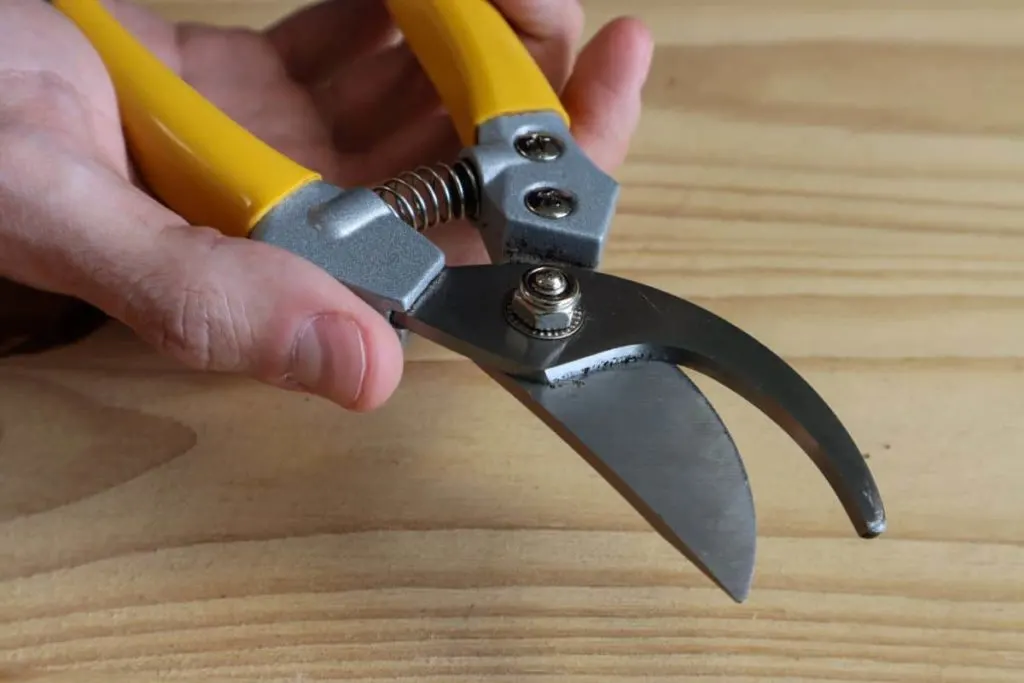
Make sure you clean whatever tools you need before you get started. Any dirt or bacteria on the scissors can transfer to the new cuttings or plant, potentially resulting in disease. Give them a quick wash with soap and water, especially if they’ve recently been used on any damaged or diseased plants.
With all the essentials gathered, you can start propagating. Follow these simple steps to get going.
Find The Stem
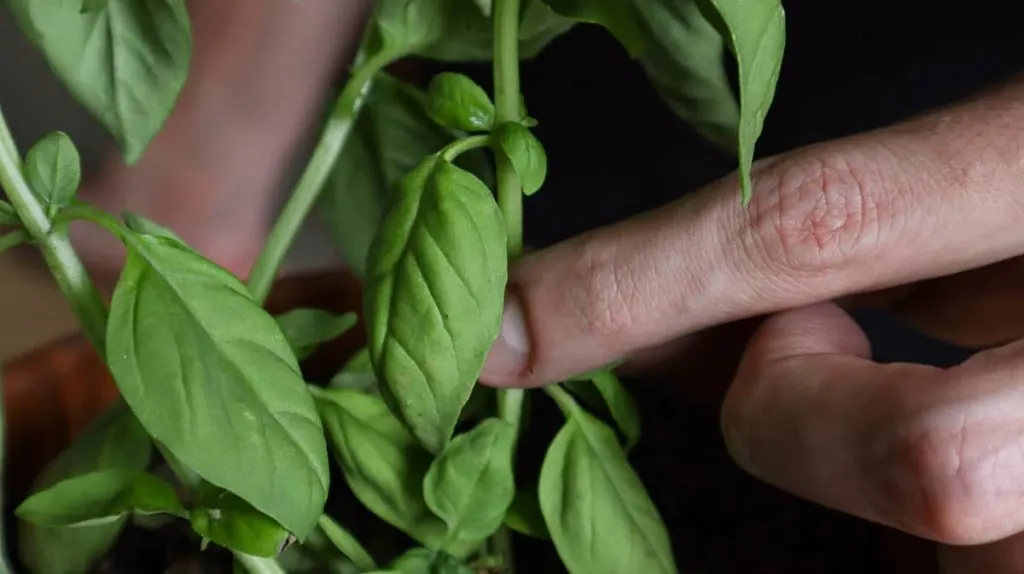
Before you make a cut, you need to find the right stem for cutting. Firstly, the stem should be several inches long and have a few sets of leaves for successful rooting. It should also be completely disease-free and as healthy as possible.
Avoid any stems with damaged or diseased top leaves as these are the only things to give the cutting enough energy to develop roots. Any diseases will simply transfer to the new plant.
Make The Cut
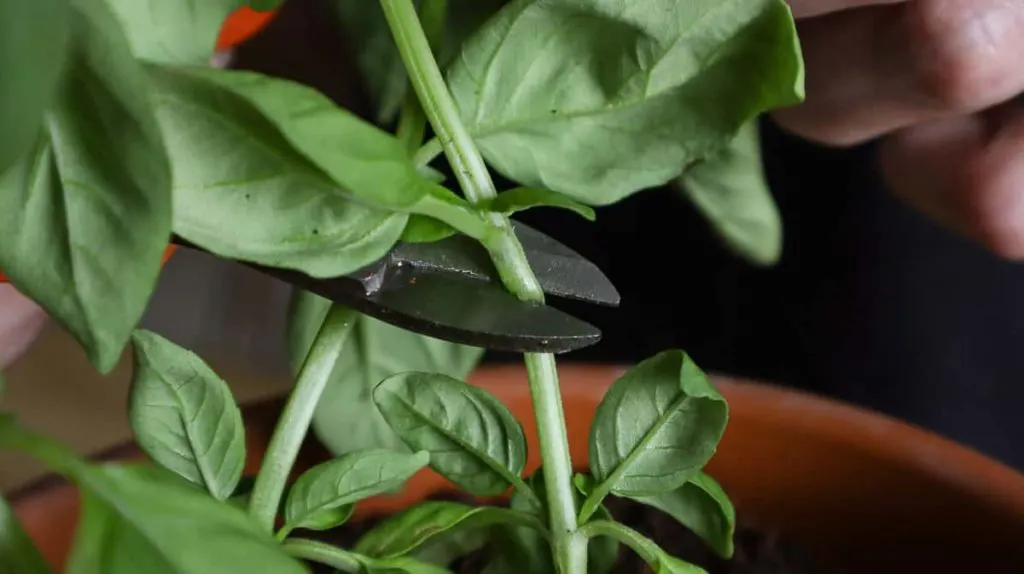
Once you’ve chosen the perfect stem, you’re ready to make a cut. Remove the stem with your sharp, clean shears at least four inches down. Cut just below a set of leaves on a stem with at least three sets of leaves.
Be careful not to cut too close or too far from the leaves. If you cut too close, you may damage the part of the stem where the roots will emerge, preventing successful propagation. If you cut too far from the node, the bottom part of the stem may die off, again preventing rooting.
Cut as many healthy stems as you’d like to propagate. Don’t remove more than ¼ of the plant at one time to ensure it grows back healthily. Removing too many stems can result in shock, limiting regrowth.
Remove The Foliage
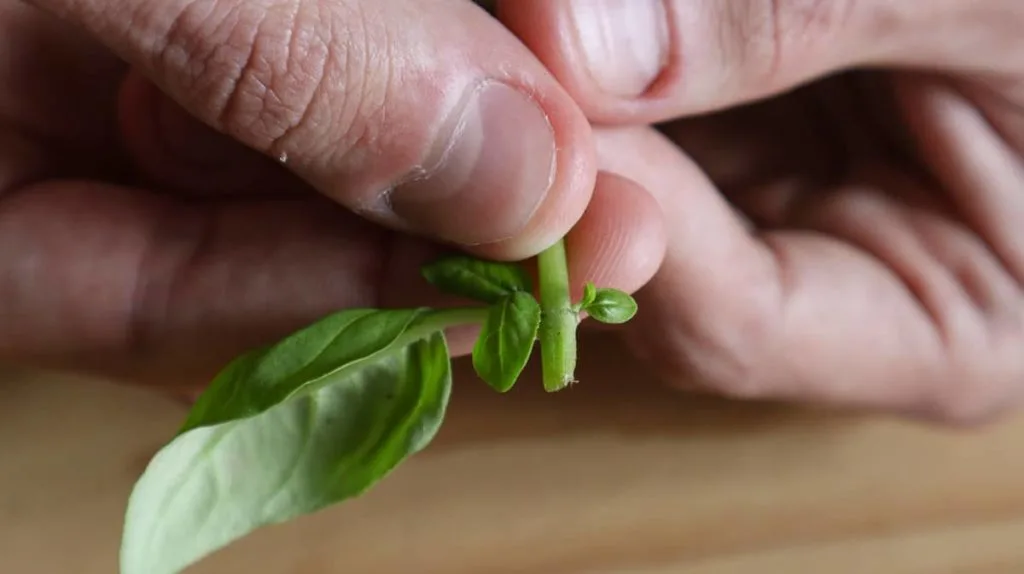
Gather your cuttings and remove the leaves from the bottom half of the cutting, at least two inches long. Pinch the leaves off gently to avoid damaging the stem. Make sure you don’t throw these out – toss them onto a fresh pizza or into a crunchy salad sandwich.
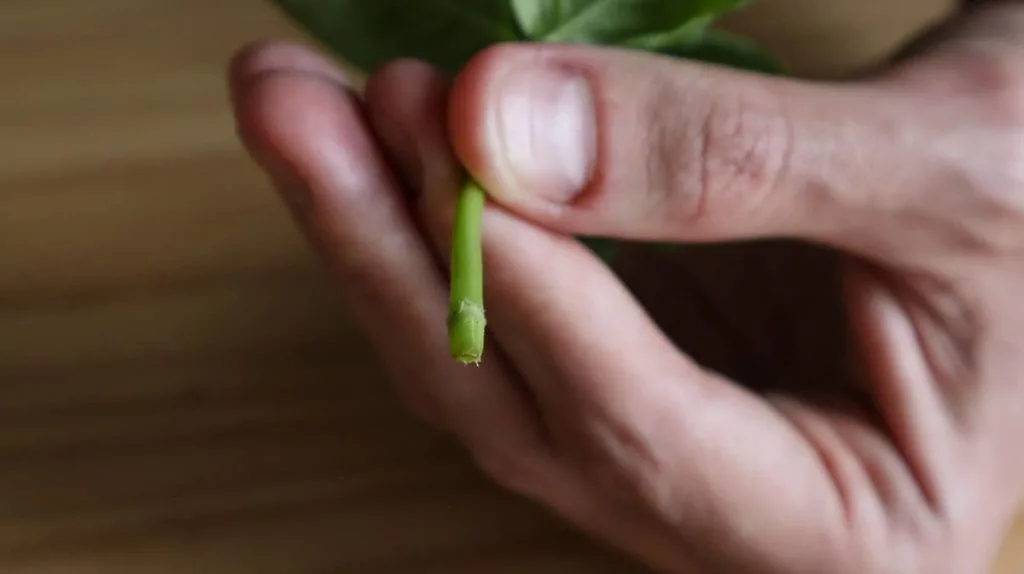
When you’re finished, your cutting should have at least two sets of leaves on the top half. These will facilitate root growth on the exposed bottom half of the cutting.
Root In Water
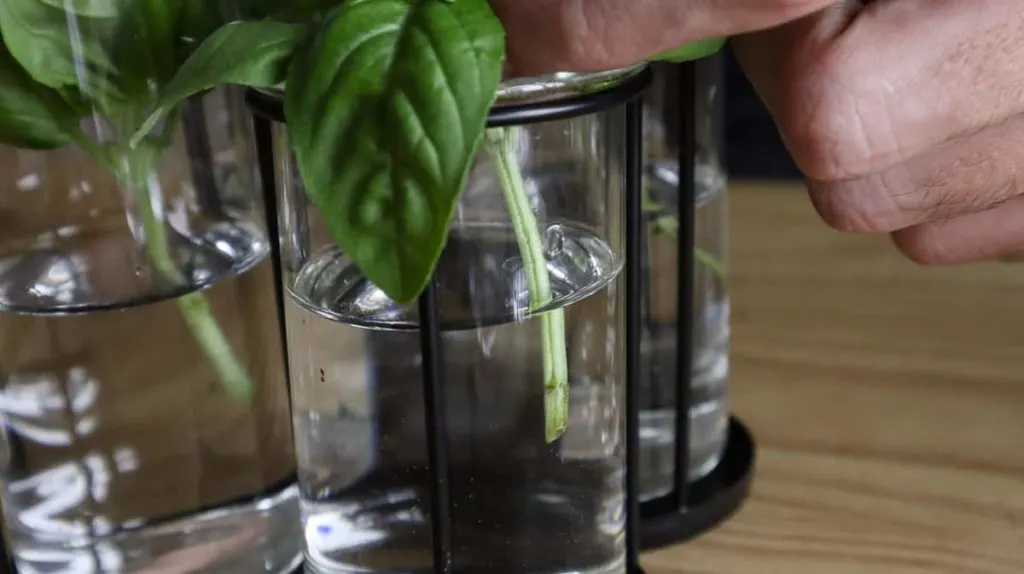
Now for the easiest part – rooting.
Simply place your cuttings in a glass filled halfway with water. Filtered water is best, as tap water can contain chemicals that inhibit rooting. Alternatively, you can boil the water and let it cool before filling the glass. This depends on the quality of tap water in your region as basil will root quite easily and shouldn’t mind average quality water.
If you’re looking for a foliage-based feature on your windowsill, use the best-looking glass available. There are also many glass propagating stations available online that add an extra flair to the process, but regular glasses will also do the trick.
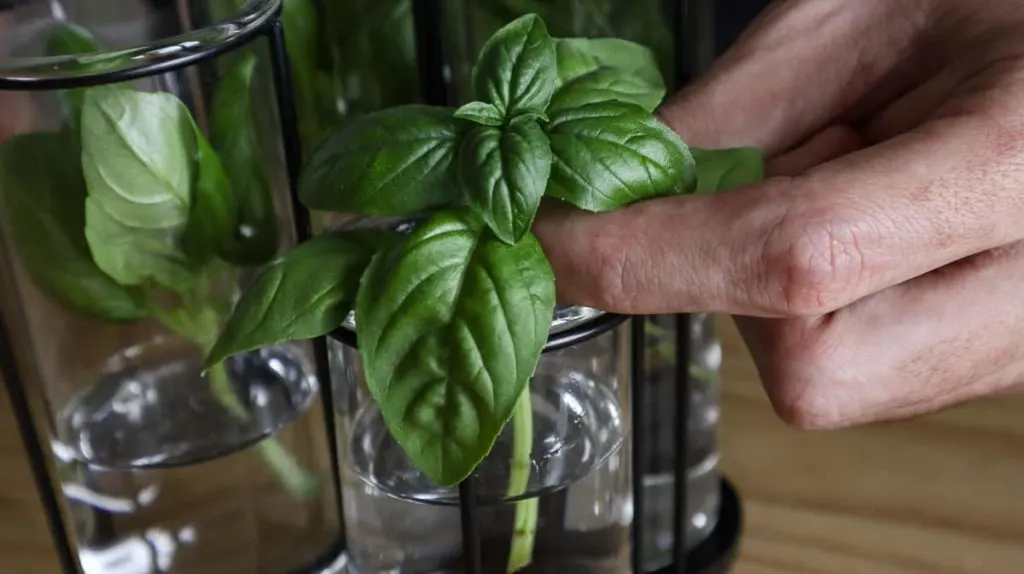
Leave the glass in a warm spot on your windowsill. Basil loves plenty of sunlight, so some sunlight during the day is ideal. However, don’t leave it in full sun for too long, especially in front of a window, as this can scorch the leaves and damage tender root growth.
The oxygen in the water will deplete over time, potentially suffocating the roots. Keep an eye on the water and change every few days or when it appears cloudy. If the water still looks clean, you can also just top it up every now and again as it evaporates from the glass. Always keep the water level consistent and above the bottom of the cutting to ensure root growth.
Transplant
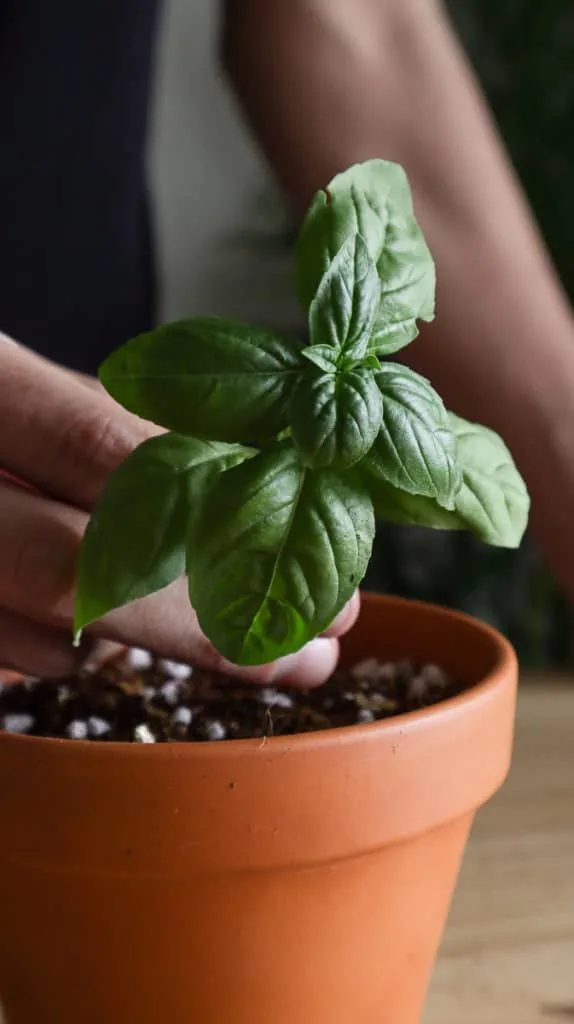
When the roots have grown a couple of inches, your cuttings are ready to be transplanted. Do not wait too long to transplant. The roots basil grows in water are finer and more tender than what they will grow in soil. If you leave the roots to grow too long before transplanting, they may struggle to adjust to the conditions in the soil, resulting in transplant shock.
You can also limit potential transplant shock by slowly adding a soil-like material to the water every day until it has been completely replaced. Coconut coir or peat moss are ideal, as they are closer in texture to soil but still light enough to encourage root growth. Add a teaspoon a day until the glass is half full, then transplant.
Start by preparing your soil for transplanting. If you’re planting in a pot, a mixture of potting soil amended with coconut coir and perlite will facilitate drainage and provide all the nutrients the plant needs. If you’re planting straight into the garden, ensure it is loose, well-draining and free of weeds to prevent competition.
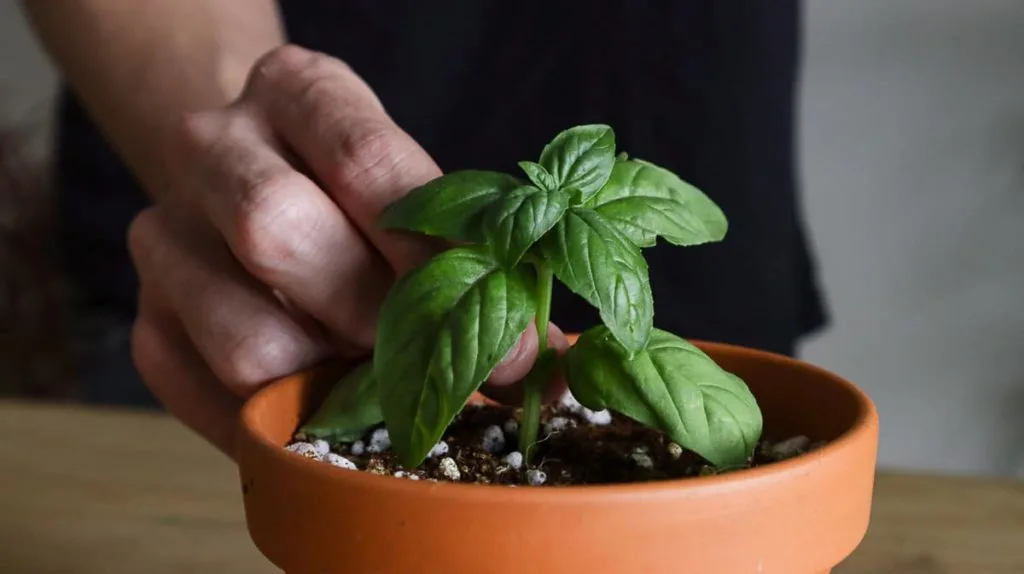
Plant each cutting into its own pot or several inches apart if planting in the ground. Try not to damage the roots while planting to limit shock. As soon as you’ve planted, water thoroughly to encourage further root growth.
Rooting In Soil
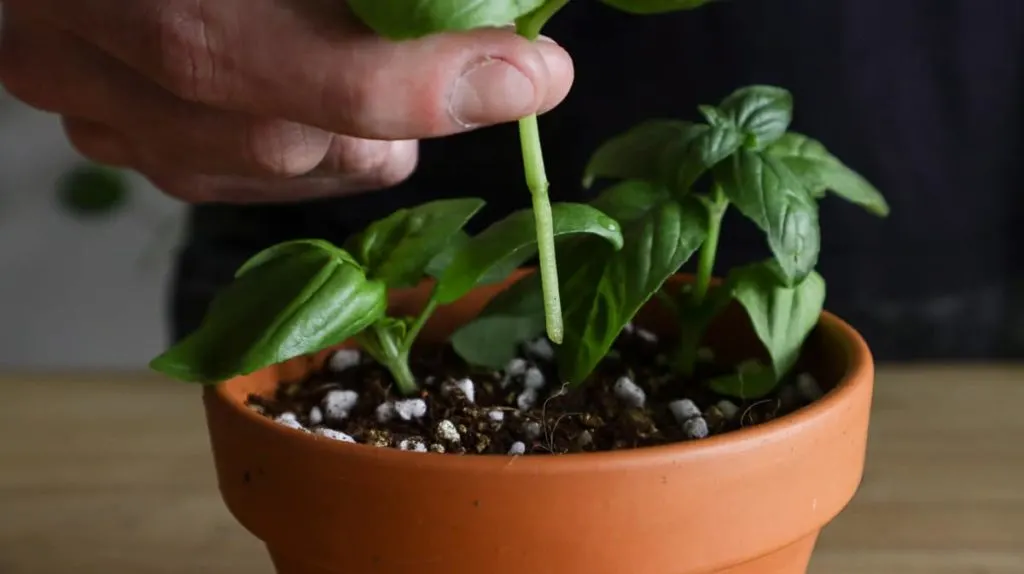
If you want to skip the water rooting step, you can also plant straight into soil. This saves you time and produces stronger roots more likely to survive outdoor conditions.
To root in soil, grab a pot and fill it with a mixture of coconut coir, perlite and vermiculite. This mix is light enough to promote strong root growth while retaining enough moisture to keep the thirsty cuttings happy. Two parts coconut coir, one part perlite and one part vermiculite is ideal, but there are many other options, like peat moss or compost.
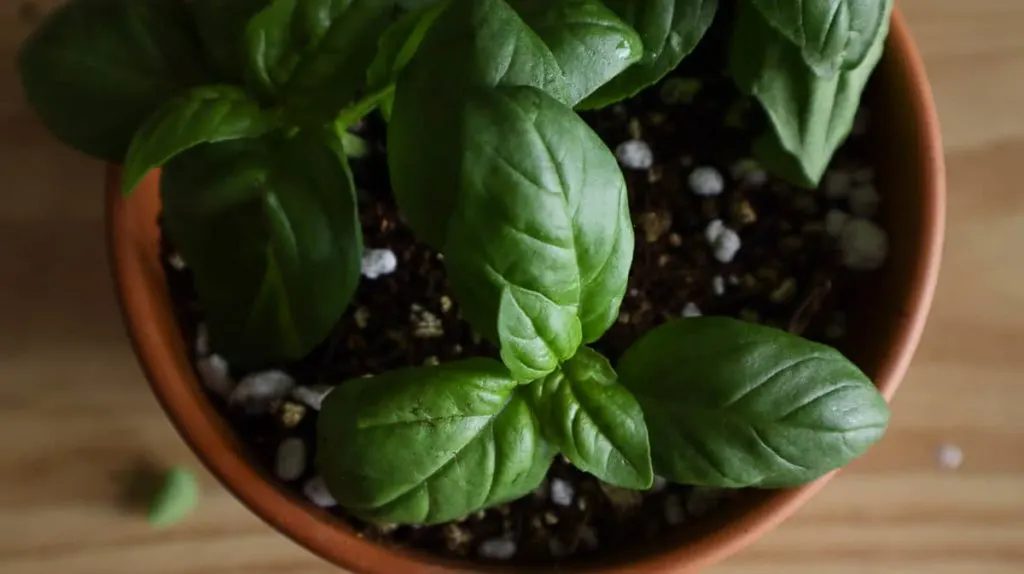
Plant several cuttings into one pot, firming the soil mix around them. Water thoroughly and leave the pot in a bright, warm spot to root. Keep the soil moist but not waterlogged. After a few weeks, the basil should start to develop new growth, indicating root growth.
Propagating Basil By Division
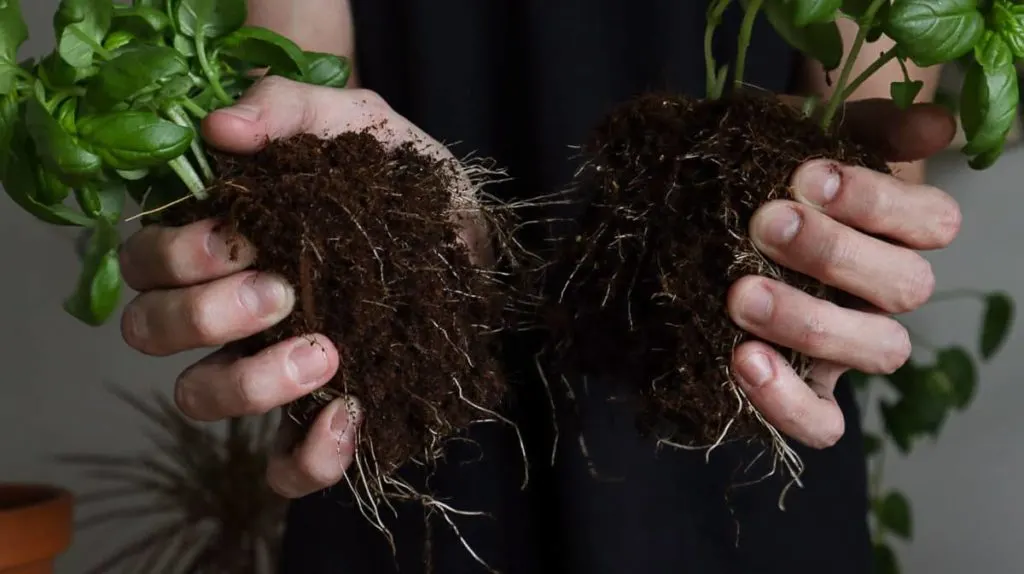
Existing basil plants can also be propagated by division. This is recommended for established plants as they can quickly become overcrowded and compete for nutrients, especially in small pots.
To divide, simply remove the plant from its pot, or lift it from the ground, and pull groups of stems apart. Each division should have plenty of roots for regrowth. They should pull apart easily, but you can also shake off some of the soil and cut the roots with a clean pair of scissors.
Replant each division into a separate pot or several inches apart planted in the ground. Keep them well watered to limit shock and promote regrowth.
More Plant Propagation Tutorials
If the idea of growing free plants from cuttings is up your street, then here are some more plant propagation tutorials for you to try.
